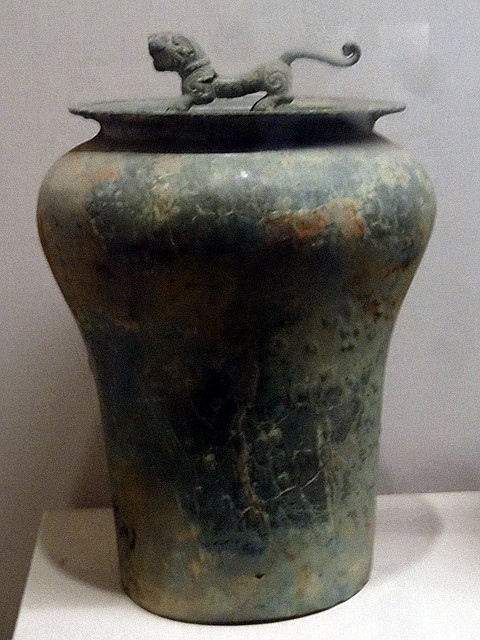Chiu's history
277 views · Organized by 南丘 on 2022-02-16
There are different records in the past dynasties with regard to the method of playing the chunyu. On the bronze shells unearthed from the ancient tomb of Shizhai Mountain in Jinning, Yunnan (about the Western Han Dynasty), there is a scene of a large group of Yunnan people holding religious ceremonies. , The bronze drum hangs on the side, and the chisel is hanging on the crossbar, and there is a person next to it and hits it ("Chinese Music History Illustrated Book" II-41). Provides us with vivid performance images. In addition, according to the records of "Southern History: Qi Shixing Wang Jian's Biography" and "Northern History: Dendrobium Zhengzhuan", a container was used to place water under the chun, "Kneeling carefully with the awning stem to inject the chun, and shaking the awn with the hand, the sound will be heard. Such as thunder" or "stroking it with a awning tube, its sound is extremely clear".
In the late Spring and Autumn Period, in 1984, a set of three pieces was unearthed from the top of the northern mountain of Dantu. The whole is oval-shaped, with a tiger-shaped button. The inside of the plate, shoulders and mouth are decorated with modified cloud and thunder patterns, and there are decorative patterns composed of eight small dragons on each side of the tunnel. Now in the Nanjing Museum.

In the late Spring and Autumn Period, in 1984, a set of three pieces was unearthed from the top of the northern mountain of Dantu. The whole is oval-shaped, with a tiger-shaped button. The inside of the plate, shoulders and mouth are decorated with modified cloud and thunder patterns, and there are decorative patterns composed of eight small dragons on each side of the tunnel. Now in the Nanjing Museum.
Involving musical instruments
chunyu (pinyin: chún yú)It first emerged in the north. In the Central Plains, it was mainly used for wars and sacrifices, and then gradually spread to the west. In the late Spring and Autumn Period, it was accepted by the Ba people in the southwest, and was used for wars, sacrifices, and alliance activities of various ethnic groups in the southwest. middle.
 渝公网安备 50010702504639号
渝公网安备 50010702504639号